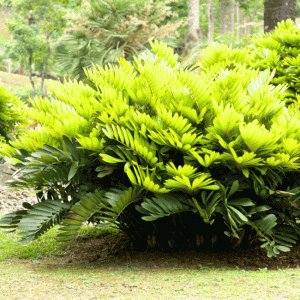A Tasteful, Flowering Evergreen
Why Allspice Trees?
You probably have it your spice rack. Allspice is used for pickling, in baking, and its oils are used in a range of products. But did you know allspice comes from a tree known for its aromatic tendencies and pretty white blooms set against an evergreen backdrop?
Now you can have it in your own backyard. The Allspice Tree’s distinguished white-gray bark and small brown fruit, which boasts aromas akin to cloves, nutmeg, and cinnamon, stand out wherever you plant it. You may recall allspice as the critical ingredient in your grandmother’s award-winning pumpkin pie…now imagine harvesting your own!
One of the world’s most fragrant trees, the Allspice also delivers natural anesthetic, which can be used in a pinch for a toothache or upset stomach. In Caribbean culture, the leaves and fruit of the Allspice are often thought to be a natural antioxidant.
Despite all its uses, it’s an easy grower. The Allspice, native to the Caribbean and Central America, can be grown successfully in warmer climates in the United States, and once established, is often quite hardy and resistant to minor drought. While female plants need a male pollinator to show fruit, some male plants are able to flower on their own!
Planting & Care
1. Planting: Plan to grow your Allspice Tree in a location where it will receive direct morning light or partially shaded locations in the afternoon. It adapts to a number of soil types but prefers well-drained soil.
Dig your hole about 2 to 3 times the diameter of the container your tree arrives in. Set the soil aside, and amend as needed, thoroughly blending any additions. Rake a little of the soil mix into the hole, and set the root ball allowing for a little settling but with the goal to have the soil level be the same as the garden soil around it. Fill about halfway up the hole and water well, allow the water to drain through the soil, and finish backfilling around the tree.
2. Watering: Water once a day for the first two weeks, then reduce the frequency to twice per week. If you’re not sure when to water, simply check the surrounding soil about 3 inches down.
3. Fertilizing: When fertilizing Allspice Trees, use a low concentration, well-balanced fertilizer. Start about 6 months after planting and every 6 months or so thereafter.
4. Pruning: Wait to prune your Allspice Tree until it is well established. Typically, you’ll want to wait three years before pruning (after it has started blooming, preferably). Prune only during the winter when the tree is not actively growing. Shape the tree so as to have a tight and full growing habit.









